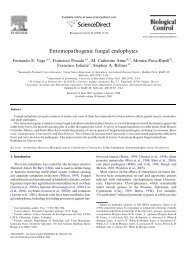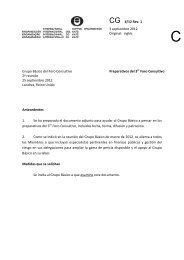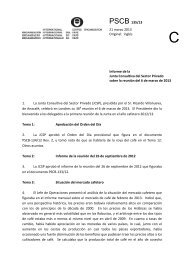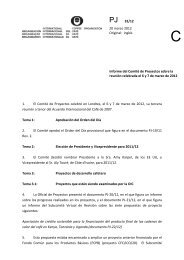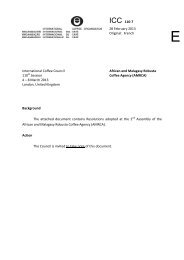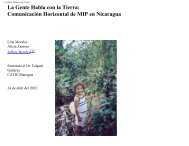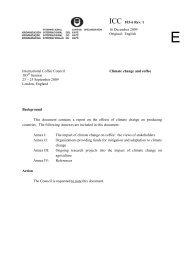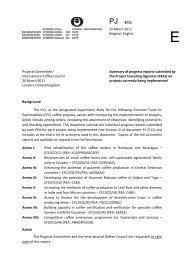Devouring profit - International Coffee Organization
Devouring profit - International Coffee Organization
Devouring profit - International Coffee Organization
Create successful ePaper yourself
Turn your PDF publications into a flip-book with our unique Google optimized e-Paper software.
advantage to try to implement IPM programmes. However the education level is not<br />
high; 73% of them have no more than primary education. For this reason Muñoz et al.<br />
(2000) consider that the technical information should be presented very simply in<br />
order to get a better uptake.<br />
Hence the extension strategy would have to be very carefully thought out, to achieve<br />
good comprehension, adoption and improvement of farm management. This especially<br />
because an IPM strategy implies measurements of infestation levels which have<br />
to be taken and recorded, and decisions made after careful analysis of this information.<br />
All this effort could act as a key barrier to both IPM understanding and adoption.<br />
Farmers’ experience in coffee must nevertheless be considerable, 64% of them have<br />
been growing coffee between 5 and 15 years and 16% more than 15 years. 55% have<br />
between 1 to 5 family members, 25% of them have between 6 to 10 members and<br />
20% more than 11. But despite these large families, Honduran coffee farmers consider<br />
that there is a labour shortage, mainly during harvesting time. During this period<br />
most of the labour must be transported from the villages where they live to the coffee<br />
fields early in the morning and then back in the evening, a significant extra cost.<br />
<strong>Coffee</strong> farmers’ income is seasonal since coffee is harvested over a short period of the<br />
year as in all Central American countries. Hence they plant crops that can give both<br />
income and food in other seasons. Examples of these are banana, plantain, maize,<br />
beans and sugarcane.<br />
Rural wages: the daily wage for a farm worker during the project was about US$3 ( 45<br />
Lempiras 24 ), for workers carrying out activities such as weeding control, shade regulation,<br />
etc. However for harvesting they are usually paid piece-work by volume of coffee<br />
collected. For year 2000 coffee farmers were expecting to pay about US$1 per<br />
galón (equivalent to a US gallon) and on average a coffee picker could expect to gather<br />
between 5 and 8 galones/day. Hence the rural wage at harvest time would be between<br />
US$5 to 8. Although the normal rural wage in farming activities is low in comparison<br />
with other countries of the region the cost of collecting berries is almost equal<br />
to that of Colombia which is very high. Hence Honduran coffee farmers might well<br />
have problems in future because of the cost of labour involved in coffee picking could<br />
reach something approaching 40 to 50% of the total production costs. It is surprising to<br />
find this apparent paradox of both high poverty and high labour costs and we believe<br />
this requires further study.<br />
Guatemalan coffee growers<br />
Basic data about coffee farmers: according to official Anecafé figures, there are<br />
about 61,600 coffee farmers in Guatemala. With a total coffee area of about 262,500<br />
ha, the national average is about 4.2 ha/farmer. This value is somewhat higher than<br />
24 Lempira is the national currency. The exchange rate is US$1 = 15 Lempiras<br />
89




